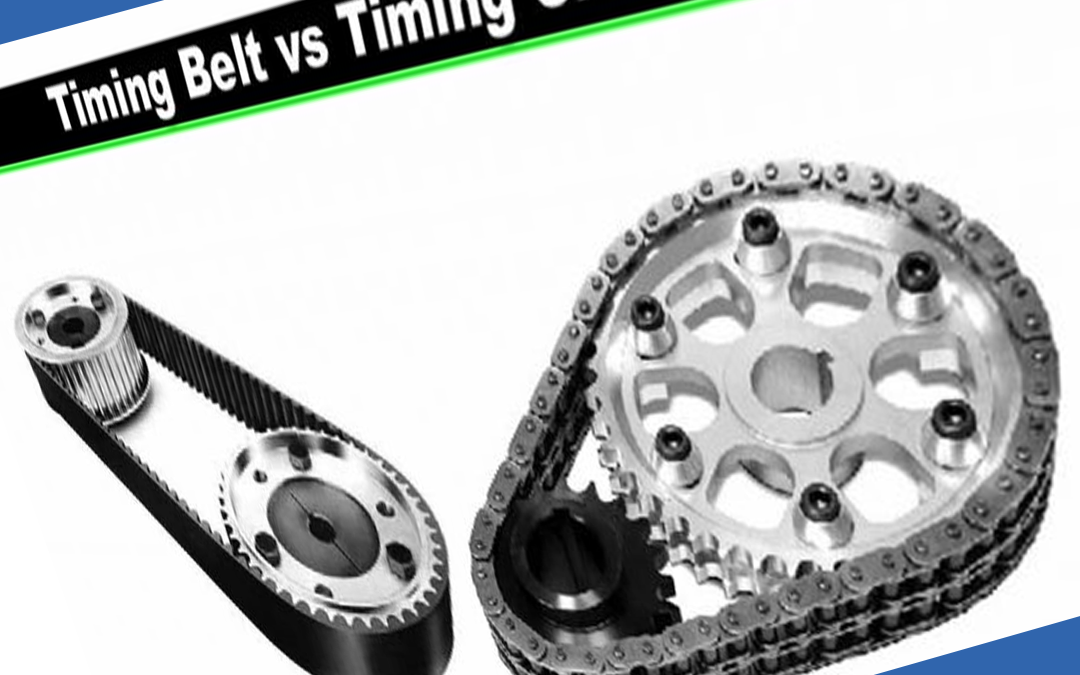Timing Chains vs. Timing Belts: Maintenance and Pros & Cons
Introduction In the world of automotive engineering, the timing chain and timing belt play crucial roles in the smooth operation of a vehicle’s engine. They synchronize the movement of the engine’s camshaft and crankshaft to ensure valves open and close at the correct times. This synchronization is vital for the engine’s performance and longevity.
Timing Chains A timing chain is a metal chain, like those found on bicycles. It’s durable and designed to last the lifetime of the engine. It operates inside the engine and is lubricated by engine oil.
Maintenance of Timing Chains Timing chains generally require less maintenance than timing belts. While they don’t have a set replacement interval, it’s recommended to inspect them regularly after the vehicle has covered a significant number of miles, typically around 100,000 to 125,000 miles.
Pros of Timing Chains
Durability: Made of metal, timing chains are robust and can handle high temperatures and pressures within the engine.
Longevity: They usually last the life of the engine with proper maintenance.
Cost-Effective: No need for frequent replacements saves money over time.
Cons of Timing Chains
Noise: Can become noisy if stretched or worn out.
Costly Repair: If a timing chain fails, the repair costs can be substantial due to the complexity of the work involved.
Timing Belts Timing belts, on the other hand, are made of rubber reinforced with materials like Kevlar. They are quieter and less expensive to produce but have a limited lifespan and must be replaced at specific intervals.
Maintenance of Timing Belts Timing belts typically need to be replaced every 60,000 to 100,000 miles. Regular inspections are crucial because if a timing belt fails, it can cause significant engine damage.
Pros of Timing Belts
Quiet Operation: They operate more quietly compared to timing chains.
Less Expensive: Initial costs and replacements are generally cheaper than chains.
Cons of Timing Belts
Regular Replacement: They require periodic replacement, which can be a significant maintenance cost over the lifespan of the vehicle.
Risk of Severe Damage: If a timing belt snaps, it can cause catastrophic engine damage.
Conclusion Both timing chains and timing belts have their advantages and disadvantages. The choice between the two often comes down to the design of the vehicle and the manufacturer’s preference. As a vehicle owner, understanding the differences can help you make informed decisions about maintenance and potential repairs.
At Auto Evolution LTD, we offer a comprehensive range of services, including timing belt and chain replacements. Should you notice any unusual sounds, issues with your timing belt/chain or just want it checked for peace of mind, it’s crucial to reach out to us. We’re here to safeguard your engine against any possible complications. Team Auto Evolution LTD #timingchain #cambelt #protectyourengine
